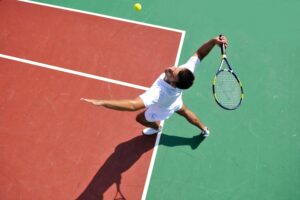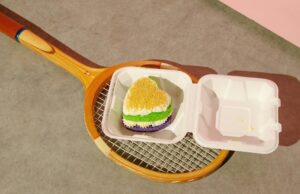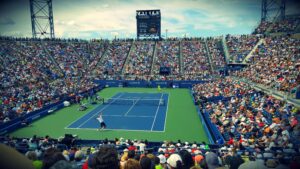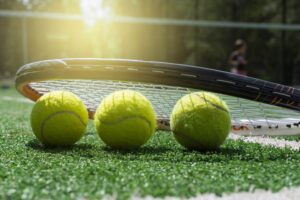How Different Courts Affect the Game
Are all tennis courts created equal? It depends who you ask.
There is no denying that the surface of a court makes a distinctive difference in the playing experience, especially when it comes to bounce and speed. Some players are able to adjust accordingly, while others struggle to adapt.
Grand Slam winners prove that it’s possible to find success on any court surface, but that doesn’t mean it’s easy. A player must have not only exceptional skills, but also an understanding of what differences to expect and how to work with them.
Grass courts tend to produce a lower bounce and higher speed. There is also an element of unpredictability, as there are variations in the softness of soil and evenness of grass. There’s no telling what the ball may do when it hits grass, even at Wimbledon, where the courts are maintained better than any grass courts in the world.
Wimbledon courts are made of durable Perennial Ryegrass that is regularly mowed. Weather and soil compaction can affect the bounce and speed of the ball, so the surface is covered to maintain dryness and is measured for evenness. On grass courts that don’t have the Wimbledon level of maintenance, it’s not uncommon to encounter bumps and slipperiness.
Big serves, net play, and slicing are important areas of focus when preparing for a match on a grass court. The speed at which the ball skids off the grass surface makes it difficult to return, as does a low bounce, especially during a well-executed slice.
To combat those unpredictable grass-court bounces, perfecting a short backswing and fast footwork can be invaluable.
Clay courts have the opposite characteristics of grass courts, producing slower speeds and higher bounces. Finding success at the Stade Roland-Garros during the French Open, for instance, requires a different approach than playing at Wimbledon.
There is more time to return a serve on clay, so big serves aren’t as much as an advantage here as they are on grass courts. A better strategy is to focus on shots that your opponent isn’t expecting and will therefore have a hard time returning.
Hitting the ball at different angles will make it harder for your opponent to get to it on a slippery clay surface. Aiming behind them is a good strategy, as it will force them to change positions to return the ball, which is not easily done on clay.
Clay courts also allow for longer rallies. Therefore, it is highly advisable to focus on building endurance to keep up with the drawn-out play. Drop shots can come in handy on clay courts as well. Your opponent will usually be farther back due to the longer rallies, and may have a difficult time getting up to the ball.
Hard courts, used in both the U.S. Open and the Australian Open, are generally made of concrete or asphalt. They are the easiest to maintain and quite commonly used. They provide a speed higher than clay and shorter than grass, along with a high bounce, proving to be beneficial to all types of players.
Carpet courts consist of removable synthetic covering and provide low bounce and fast play. They are no longer used in the major ATP and ITF professional tournaments, but are often found in indoor arenas.
Each tennis court surface has its pros and cons. At the end of the day, the optimal conditions are going to depend on the player and how much they are willing to adjust from one surface to the next.








Comments: 0